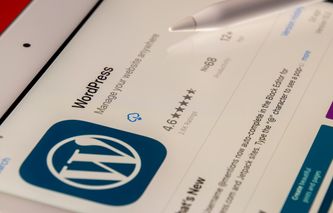Website load time is an essential aspect of performance that determines whether visitors stay or leave after becoming frustrated. As technology progresses, website loading times improve. That’s because websites have become more optimized, and bandwidth speeds worldwide are generally improving. However, there is still much more room for growth as audiences become less patient.
On this page, we will explore the website load time statistics highlighting the quality of the web browsing experience in 2023. We will break the statistics into several categories to help you find the ones you want to learn about first. Also, don’t skip the FAQ section at the end to find out the commonly asked questions surrounding site load times.
Top 10 Website Load Time Statistics and Facts of 2025
The average website loading speed is 10.3 seconds.
Each webpage has around 50 elements to load on average.
64% of consumers unhappy with the experience will buy elsewhere next time.
82% of New Yorkers vs. 60% of Californians view website speed as important.
It takes 15.3 seconds for the average mobile webpage to load.
It takes more than 3 seconds for 53% of mobile web pages to load.
Walmart saw a 1% increase in revenue for every 100ms of download speed increase.
Technology websites take 11.3 seconds to load.
Finance websites take 8.3 seconds to load.
77% of mobile shoppers would purchase from faster websites.
General Website Load Time Statistics
10.3 seconds is the average webpage loading speed.
10.3 seconds might sound like a long time considering our day-to-day experience, but you have to think of this as a worldwide statistic. Low bandwidth capacity in some countries means it takes significantly longer to open web pages. Therefore, the average page load time can differ in each part of the world.
Note that this figure is for downloading all digital assets of a webpage. In some cases, the webpage might be ready for viewing before the final elements are downloaded.
(Backlinko)
Around 50% of people would swap video and animation for faster loading times.
This shows that many people are more interested in faster loading times than multimedia. If text is enough to serve the purpose of a webpage and it keeps a low average page load time, visitors are happy to forgo animations and video.
However, it depends on the viewer. In some countries, internet speeds are so fast that people are used to quick page downloads and high doses of multimedia. So, when the website loading speed is not good enough, it can affect their experience.
(Unbounce)
On average, there are fewer than 50 elements that need to be loaded when we open a page.
Complicated web pages contain many page elements that need to load, which increases the time taken to download the data. Therefore, page load time statistics reveal that webmasters need to stick to around 50 page elements or fewer to reach the optimal site load speed.
Many website visitors would prefer a minimalist web page that loads faster instead of a slow and cluttered page.
(Google)
10% of web pages could shed 1MB of their size simply by compressing images.
Another 25% could become lighter by up to 250KB. Website speed statistics show that web page size is one of the biggest factors that contribute to the loading speed. Therefore, it makes sense to use any means necessary to reduce the file size of the web pages. Compression is a technique that makes the file size smaller and helps to reduce the average website load time. Therefore, it’s possible to reduce file size without compromising webpage quality.
(Google)
Speed is a vital factor in making a purchase for 60% of Californians compared to 82% of New Yorkers.
Page speed statistics indicate New Yorkers have less patience when buying goods online and demand faster loading speed.
This data might help webmasters segment the file sizes of websites based on the audience. For instance, media-heavy files will be more viable with Californians that are willing to put up with a slower website loading speed.
(Unbounce)
$18 billion is lost annually because of abandoned shopping carts.
E-commerce stores lose a lot of money each year because digital shopping carts are left before the checkout process has been completed. There are many reasons for these abandoned shopping carts, but a portion of them happen because of the slow loading speed of a website.
Frustrated customers that cannot finish the checkout process will leave and buy their goods from a competitor. Therefore, it helps to have fewer steps to complete checkout and reduce the file sizes of those pages.
(Web Tribunal)
64% of online shoppers who are unhappy with the experience will go elsewhere next time.
This is one of the page speed stats that indicates websites have one chance to impress customers with a positive online shopping experience, or they might lose them forever. There is a lot of competition online in most industries, which means websites have to get it right, and loading speeds are a big factor in the online shopping experience.
Websites that experience low returns from regular customers should use questionnaires and other data-gathering sources to figure out why customers are not coming back.
(LoadStorm)
Mobile Website Load Time Statistics
In the US, 79% of online time is on mobile devices.
Most internet usage in the US takes place on mobile devices. It also means that webmasters need to focus on optimizing websites for mobile devices.
This means having minimalist user interfaces with a lack of page elements will require less bandwidth to download. Viewers with limited monthly bandwidth allocation will not want to browse media-heavy web pages because their site load speed will be very low.
(Statista)
15.3 seconds is the average loading time of mobile web pages.
This is a relatively long loading time, and there is room for improvement. Companies that can cut the loading time in half will see more customers compared to their competitors.
When site load times are not good enough, users have little patience to wait for the page to load, which means there are many opportunities to leave the checkout process earlier than they should. However, keep in mind that the long loading time is a global figure and includes countries where mobile internet speeds are slow.
(Google Research)
Because of too many page elements, most mobile sites are still too slow and bloated.
This is one of the website load time stats taken in 2018, but it still applies today. The majority of mobile traffic is now on 4G networks instead of 3G, but the limiting factor for speed is the web pages themselves. Even with 5G speeds, some webpages have acceptable page load times but they cannot load much faster since they are not optimized.
Webmasters that insist on having a lot of page elements can somewhat reduce the problem by cleaning up the code. This means optimizing coding to ensure that web browsers can read it more easily.
(Google)
53% of mobile users leave a webpage if it takes more than three seconds to load.
Around three seconds seems to be the point at which more than half of mobile users decide the page is too slow and simply leave. Therefore, webmasters need to ensure that most web pages on their websites load faster than 3 seconds. Moreover, achieving faster loading speeds results in lower bounce rates.
Each website should monitor its page speed stats to determine the ideal webpage loading times. Of course, some industries and website types might get away with longer times, and analytics can paint a picture of what’s going on.
(Akamai)
It takes 87.84% longer for a mobile webpage to load than a desktop one.
Page load time statistics indicate there is a significant 87.84% difference between mobile and desktop loading speeds. Mobile pages should be smaller and contain fewer page elements.
However, mobile devices usually have a slower bandwidth connection compared to desktops. Ultimately, the connection speed determines how fast a webpage will load, regardless of the device.
(Backlinko)
77% of mobile shoppers would purchase from a website if it allowed for quick transactions.
Part of the appeal of mobile shopping is the ability to conveniently make purchases while on the move. This means mobile shoppers do not want to spend hours browsing on their devices. Speed and ease of use are the top selling points of mobile online shopping. Sellers should always check their website load time stats and see if they can improve them for a better user experience.
Therefore, websites with fast loading speeds are going to impress mobile consumers. Speed should be one of the top factors in assessing the quality of a website.
(Think with Google)
Importance of Website Load Time Statistics
The first five seconds can make or break conversion rates.
This statistic highlights the fact that many users are not willing to wait longer than 5 seconds for a web page to load. Therefore, landing pages with loading speeds above 5 seconds run the risk of low conversion rates.
This can result in unprofitable marketing campaigns simply because people are clicking on an ad and then leaving out of frustration. What is more, poorly designed websites reflect badly on the brand.
(Portent)
Each additional second of loading time reduces the conversion rate by 4.42%.
Some businesses that have high annual revenue can see massive increases in earnings from increasing conversions by just 1%. Therefore, this is one of the page speed stats that reflect the importance of reducing the loading time to boost conversion rates and profitability.
Keep in mind that these figures are averages and can vary widely across industries. In markets where there are a lot of choices, customers will flock to the best-performing websites. However, they might be willing to put up with slow websites if there is a lack of choice.
(Portent)
70% of online shoppers share that webpage loading speed impacts their decision to buy.
Most online shoppers are used to average page load times being pretty fast. Think about the average time it takes to do a Google search. In most cases, it is just a few seconds or less.
Therefore, digital buyers expect a fast online buying experience – especially if they need to browse through many pages and compare several products. When website speeds drop, consumers start to consider shopping elsewhere for a faster experience. After all, people shop online in the first place to save time.
(Unbounce)
Website page loading times of 0-2 seconds lead to the highest converting pages.
Web pages that are faster to load will convert at a much higher rate. Therefore, businesses should pay attention to their loading speed using analytics software and check the Google recommended page load time. When they notice slow pages, fixing those speeds can be more important than coming up with the latest offer.
However, achieving instant loading times for all pages is impossible. Sometimes it is a balance of providing a media-rich page to impress audiences and getting faster loading speeds.
Finally, many websites have acceptable page load times which can be good enough to keep a high conversion rate.
(Portent)
The biggest reason why online shoppers bounce from a mobile page is latency.
A website can have the latest technology, captivating copywriting, and eye-catching graphics, but if the latency is too high then visitors will leave anyway. Consumers expect some latency – after all, time is required to download webpage elements.
However, a balance must be achieved between webpage quality and the amount of time it takes to download information. Webmasters need to find the sweet spot using analytics.
(Deloitte)
One online store increased its webpage loading speeds by 43% and saw a 30% increase in conversion with an 8% bounce rate decrease.
The case study done on the online store Reverly is an excellent example of what can happen when you make drastic changes to website loading speed. The amount of money and resources spent to increase the loading speed of a website will make up for it in the form of more sales.
Furthermore, these customers will have a better experience and are more likely to return. This has a positive effect on the brand’s overall reputation.
(DigitalCommerce360)
For every 100ms of improvement in load time, Walmart saw a 1% increase in revenue.
Walmart is another case study that indicates the importance of reducing webpage loading times. They are one of the biggest e-commerce stores in the world, so they have a lot of data on website usage statistics. They really care about page load time and user experience.
They have discovered that small changes to loading speed can lead to a significant effect on revenue numbers. For massive companies like Walmart, the increase in profitability is massive.
(Walmart Pagespeed-Slide)
Website Speed Statistics Based on Industry
Technology websites take 11.3 seconds to load.
The longest websites to load online are technology based. This could be because technology-related websites contain the most media. This includes images, videos, and more. Therefore, they naturally take a lot longer to load compared to industries where websites are mainly text oriented.
This means that consumers of technology-related websites are used to long loading speeds and might be more willing to put up with them to access the content. Additionally, it can be an opportunity for these websites to work and improve their website loading speed to stand out.
(Think with Google)
Finance websites take around 8.3 seconds to load.
One of the fastest industries in terms of webpage loading speeds is finance. The loading speed of a website is a big factor when souring up-to-date stock and currency conversion information. It can lead to making faster decisions when selling or buying stocks or currencies.
Therefore, finance websites are incentivized to provide faster loading times than other industries. Just a few seconds of faster loading times can provide the viewer with an edge in terms of deploying the information gained.
(Think with Google)
Luxury websites noticed an 8% increase in time per session when load time was increased by a 10th of a second.
This is one of the website load time stats that is focused on luxury websites, but the idea most likely holds true for other industries. When small increases in loading speed are achieved, then the positive effect on website metrics is noticeable.
This shows that you can get significant results from just a small increase in loading speeds. Also, it leads to a better customer experience and improves the perception of your brand’s quality.
(Websitesetup.org)
Conclusion
Website load time statistics show the general consensus on load speed time is an ideal two-second average, based off of Google. Online businesses should take into consideration a few factors when deciding on what load speed time is acceptable for their brand specifically.
Most importantly, brands need to prioritize whether they want a website rich with media and a lot of elements to load or a website that can load as quickly as possible but has a more minimalistic design. In some cases, a balance between the two is the best option.
An optimal loading time will not only keep existing users, it will also pull in new ones. The ultimate goal should be to lower bounce rates and make an overall user-friendly experience.






